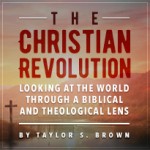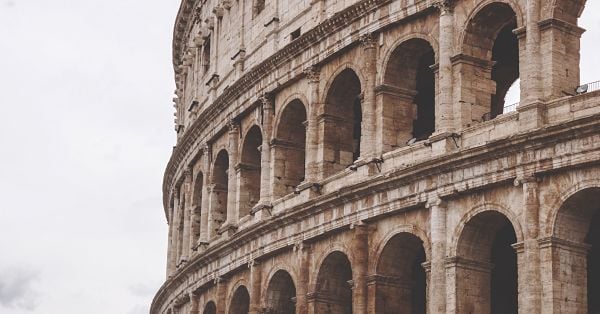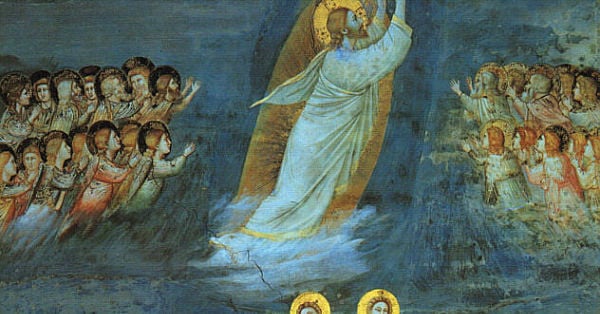
David Bentley Hart recently wrote a fascinating essay on the nature of the resurrection body over at Notre Dame’s Church Life Journal. The background of the essay is an ongoing debate that Hart has been having with N.T. Wright over their respective translations of the New Testament. Wright published his own translation, The Kingdom New Testament (HarperOne, 2011) a few years back. It is a very dynamic translation that often verges on paraphrase, but is close to the New Living Translation in terms of how literal the Greek-to-English glossing is; namely not very literal at all. Contrast this with Hart’s very recent translation of the New Testament, The New Testament: A Translation (Yale University Press, 2017), and his quite literal, word-for-word translation of the NT’s Greek. If Wright’s translation is close to the NLT, then Hart’s work is closer to the wooden English of the New American Standard Bible (NASB).
Because of the popularity and status that Wright and Hart both share within intellectually-minded Christian circles, and because both of them have published translations of the NT within the last decade, a bit of a “gentleman’s disagreement” has broken out between them over various translation philosophies. This is my sanitized way of saying that they have been having an ongoing series of articles critiquing and counter-critiquing each other.
Normally I love these “scholar fights.” Think of them like feuds in professional wrestling, except for the fact that there is no physical violence (not that there is any actual violence in pro wrestling either), the audience is, well, probably more well-read than that of pro wrestling, and the worst that really happens is a few snide comments at an SBL panel.
Riveting, primetime entertainment.
However, this fight has really hit me hard. Wright and Hart are two of the biggest formative influences on my development as a Christian, a writer, and a thinker. Reading Wright in college—especially his wonderful book, Surprised by Hope:Rethinking Heaven, the Resurrection, and the Mission of the Church (HarperOne, 2008)—caused me to fall in love with the world of biblical and theological studies. For many evangelicals who grew up in intellectually-stifling church contexts (myself included) where the world was 6000 years old, the Rapture was coming soon, and the Left Behind books were considered “good” literature, Wright’s work was the gateway drug into a world of intellectual fulfillment, critical engagement, and the historical context of the Bible and Christian faith. Were it not for Wright, I often wonder if I would have stayed a Christian.
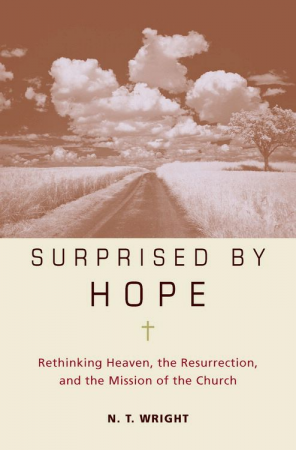
Similarly, David Bentley Hart’s work met me at a time when I was going through some deep struggles and doubts in my faith. In particular, I had many questions about the nature and existence of God. I had listened to and read a lot of analytical philosophers like William Lane Craig and Alvin Plantinga on the matter, but they didn’t help me that much. Combine that with some wrestling through questions on divine omnipotence and human agency, theodicy, and the timelessness of God and I just felt stuck. Then somehow I got ahold of David Bentley Hart’s little book, The Doors of the Sea: Where Was God in the Tsunami (Eerdmans, 2005). This remains the most brilliant book on the questions of theodicy and divine omnipotence I have ever read, and it is only about 100 pages long. It is also essentially a long rebuttal to the theology of John Piper, which is an added bonus. It was quickly followed by Hart’s Atheist Delusions: The Christian Revolution and Its Fashionable Enemies (Yale University Press, 2009), and his masterful tome, The Experience of God: Being, Consciousness, Bliss (Yale University Press, 2013). Reading Hart not only helped to assuage my questions and concerns regarding the Christian doctrine of God, it also triggered something of a revolution in my thinking. Reading Hart and the ancient, medieval, and modern thinkers he drew upon (Gregory of Nyssa, Augustine, Maximus the Confessor, Aquinas, E. L. Mascall, etc.) helped draw me toward a classical theistic conception of God as not simply “one giant being among other beings” but rather as ipsum esse subsistens, “the subsistent act of to Be” Himself. And in the midst of it all Hart helped me to see that one could be an ardent classical theist without being a theological determinist (Hart is Eastern Orthodox and a rabid critic of deterministic Calvinism).
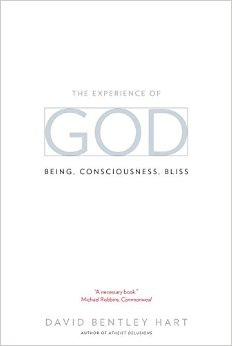
This brings us back to the dispute that Wright and Hart have been having for the past few months. For me, this is a bit like watching your mom and dad in the midst of a heated fight. Who am I supposed to side with? I love them both so much! A little bit dramatic, but you get the idea.
Well, the aforementioned Hart article above is part of this larger debate. In it, Hart takes Wright to task on his understanding and translation of the resurrection body in 1 Corinthians chapter 15: soma pneumatikon. Wright is well-known for rendering this phrase (depending on whether you are reading his popular or scholarly work) as something along the lines of an incorruptible “Spirit-empowered body” in contrast to our current corruptible state of soma psychikon, a “natural” or “soulish body.” Part and parcel of this is Wright’s contention that Paul speaks of a resurrection of the flesh in this section of 1 Corinthians. For Wright, it is our flesh and bones that will be renewed and animated by the same Spirit who raised Jesus from the dead.
In contrast, Hart contends that Wright’s understanding and translation are anachronistically reading Protestant theological convictions back into the Greek of St. Paul. Indeed, Hart starts his essay as such:
If I seem to take N.T. Wright as an antagonist in what follows, he functions here only as emblematic of a larger historical tendency in New Testament scholarship. I can think of no other popular writer on the early church these days whose picture of Judaism in the Roman Hellenistic world seems better to exemplify what I regard as a dangerous triumph of theological predispositions over historical fact in biblical studies—one that occasionally so distorts the picture of the intellectual and spiritual environment of the apostolic church as effectively to create an entirely fictional early Christianity. Naturally, this also entails the simultaneous creation of an equally fictional late antique Judaism, of the sort that once dominated Protestant biblical scholarship: a fantastic “pure” Judaism situated outside cultural history, purged of every Hellenistic and Persian “alloy,” stripped of those shining hierarchies of spirits and powers and morally ambiguous angels and demi-angelic nefilim that had been incubated in the intertestamental literature, largely ignorant even of those Septuagintal books that were omitted from the Masoretic text of the Jewish bible, and precociously conformed to later rabbinic orthodoxy—and, even then, this last turns out to be a fantasy rabbinic orthodoxy, one robbed of its native genius and variety, and imperiously reduced to a kind of Protestantism without Jesus.
An observation or two on this. I actually think that Hart is largely correct here. Wright often puts forward a model of Judaism in the Second-Temple period that is starkly divided from the larger Hellenism that permeated the ancient Mediterranean world. This view has largely been abandoned in biblical scholarship, especially after the pioneering work done by Martin Hengel on Hellenism and Judaism in antiquity (see for example his Judaism and Hellenism: Studies in their Encounter in Palestine during the Early Hellenistic Period [Fortress, 1974]). Judaism in the first-century was Hellenized. This does not mean that it was “corrupted” by Hellenistic thought, contaminated with foreign influences. Rather, it simply means that the world that St. Paul lived, worked, thought, and wrote in was dominated by Greek language and culture. Ethnic and religious minorities, such as Jews and Christians, maintained their distinctive practices and beliefs (go read Larry Hurtado’s excellent book, Destroyer of the gods [Baylor University Press, 2016] for a great exposition of this) while also being embedded within the Hellenistic world. Ancient Jews and early Christians like St. Paul then were not utterly contaminated by Hellenistic thought, but neither were they adherents to a mythical form of “pure” and un-Hellenized Jewish belief. Hart is right to critique this element of Wright’s thought. And it is within this context that Hart critiques Wright’s views on the resurrection body.
Hart goes into great detail in the essay on the anachronistic, Cartesian bifurcation between the spiritual and physical (e.g., the soul as nothing but the “ghost in the machine” that is the body) that we all too often read into ancient texts. Hart rightly critiques such Cartesian thought:
To grasp this fully today, however, one really has to take leave of the Cartesian picture of things. One must cease to think that only the material body possesses extension in any sense; one must learn not to treat words like “soul,” “spirit,” and “mind” as interchangeable terms for one and the same thing; and one must most emphatically not think of soul or spirit or mind as necessarily incorporeal in the absolute sense of lacking all extension or consistency. None of this resembles the ancient view of things. And one must be especially conscious that the words πνεῦμα [pneuma, spirit/Spirit] and ψυχή [psyche, soul] were not nebulous terms in the religious or speculative vocabulary of the Hellenized world; neither in most cases were they likely to be confused with one another, as “spirit” and “soul” can be in modern English, because they were usually used as precise names for two distinct principles that were not only already resident in the created cosmos; in some systems of thought, in fact, they named principles practically antithetical to one another in their metaphysical and religious meanings. In different eras, places, and schools, admittedly, each of these words carried somewhat different, if never entirely unrelated, connotations; but each word always had a clear significance. And Paul used both terms in ways that were very much part of the philosophical and scientific lingua franca of his age.
Hart goes on to discuss the ancient views on the nature of both pneuma (spirit) and psyche (soul) and how they were viewed not as inherently incorporeal, but rather as composed of a higher, more incorruptible substance than mere flesh and blood. “Spiritual” and “physical” were not mutually exclusive:
If we could hear the language of πνεῦμα [pneuma] with late antique ears, our sense of the text’s meaning would not be that of two utterly distinct concepts—one “physical” and one “mystical”—only metaphorically entangled with one another by dint of a verbal equivocity; rather, we would almost surely hear only a single concept expressed univocally through a single word, a concept in which the physical and the mystical would remain undifferentiated. To be born of spirit (or Spirit), to be born of the wind of life, to be born of the divine and cosmic breath vivifying and uniting all things—it would all make perfectly simple, straightforward, “physical” sense to us. Whatever the case, though, this much is certain: it was widely believed in late antiquity that, in human beings, flesh and soul and spirit were all present in some degree; “spirit” was merely the element that was imperishable by nature and constitution.
And this is where we get into the nitty-gritty of Wright and Hart’s disagreement. For Wright, resurrection bodies will indeed be new and transformed. In his giant book, The Resurrection of the Son of God (Fortress, 2003), Wright uses the phrase “trans-physical” to describe such a state, meaning “transformed physical body,” not limited to the constraints of our current fallen and perishable state. But for Wright, such bodies will still be flesh and blood, albeit transformed flesh and blood. Hart believes that resurrection bodies will indeed be physical. Both scholars disagree with the late modern, liberal Protestant nonsense of a merely “spiritual resurrection” where Jesus’ body stayed in the tomb but his spirit ascended to heaven. Rather they disagree on the composition of physical resurrection bodies. Hart on the matter:
This is why it is that those traditional translations of 1 Corinthians 15:35-54 that render Paul’s distinction between the σῶμα ψυχικόν (psychical body) and the σῶμα πνευματικόν (spiritual body) as a distinction between “natural” and “spiritual” bodies are so terribly misleading. The very category of the “natural” is otiose here, as would be any opposition between natural and supernatural modes of life; that is a conceptual division that belongs to other, much later ages. For Paul, both psychical and spiritual bodies were in the proper sense natural objects, and both in fact are found in nature as it now exists. He distinguished, therefore, not between “natural” and “spiritual” bodies, but only between σώματα ἐπίγεια (“terrestrial bodies”) and σώματα ἐπουράνια (“celestial bodies”). And this, again, is a distinction not between natural and supernatural life, but merely between incommiscible “natural” states: ἀφθαρσία (“incorruptibility”) and φθορά (“decay”), δόξα (“glory”) and ἀτιμία (“dishonor”), δυνάμις (“power”) and ἀσθένεια (“weakness”). In speaking of the body of the resurrection as a “spiritual” rather than “psychical” body, Paul is saying that, in the Age to come, when the whole cosmos will be transfigured into a reality appropriate to spirit, beyond birth and death, the terrestrial bodies of those raised to new life will be transfigured into the sort of celestial bodies that now belong to the angels: incorruptible, immortal, purged of every element of flesh and blood and (perhaps) soul.
For, as Paul quite clearly states, “flesh and blood cannot inherit the Kingdom of God; neither does perishability inherit imperishability”: σὰρξ καὶ αἷμα βασιλείαν θεοῦ κληρονομῆσαι οὐ δύναται οὐδὲ ἡ φθορὰ τὴν ἀφθαρσίαν κληρονομεῖ [1 Cor 15:50]. And, of course, he also says that those who are in Christ have been made capable of this transformation precisely because, in the body of the risen Christ, the life of the Age to come has already appeared in glory: οὕτως καὶ γέγραπται, Ἐγένετο ὁ πρῶτος ἄνθρωπος Ἀδὰμ εἰς ψυχὴν ζῶσαν, ὁ ἔσχατος Ἀδὰμ εἰς πνεῦμα ζῳοποιοῦν. . .ὁ πρῶτος ἄνθρωπος ἐκ γῆς χοϊκός, ὁ δεύτερος ἄνθρωπος ἐξ οὐρανοῦ. οἷος ὁ χοϊκός, τοιοῦτοι καὶ οἱ χοϊκοί, καὶ οἷος ὁ ἐπουράνιος, τοιοῦτοι καὶ οἱ ἐπουράνιοι καὶ καθὼς ἐφορέσαμεν τὴν εἰκόνα τοῦ χοϊκοῦ, φορέσομεν καὶ τὴν εἰκόνα τοῦ ἐπουρανίου, “So it has also been written, ‘The first man Adam came to be a living soul,’ and the last Adam a life-making spirit . . . The first man out of the earth, earthly; the second man out of heaven. As the earthly man, so also those who are earthly; and, as the heavenly, so also those who are heavenly; and, just as we have borne the image of the earthly man, we shall also bear the image of the heavenly man” [1 Cor 15:45-49]. This is for Paul nothing less than the transformation of the psychical composite into the spiritual simplex—the metamorphosis of the mortal fleshly body that belongs to soul into the immortal fleshless body that belongs to spirit: ἡμεῖς ἀλλαγησόμεθα. Δεῖ γὰρ τὸ φθαρτὸν τοῦτο ἐνδύσασθαι ἀφθαρσίαν καὶ τὸ θνητὸν τοῦτο ἐνδύσασθαι ἀθανασίαν, “We shall be changed. For this perishable thing must clothe itself in imperishability, and this mortal thing must clothe itself in immortality.”
Again, Hart adamantly argues for a physical resurrection of the body, indeed a body that is localized, that can be touched and can eat. What he disagrees with Wright about is that this body will be composed of reconstructed flesh and blood:
At the same time, of course, no other gospel [Hart is speaking of John’s Gospel here] places greater emphasis upon the physical substantiality of the body of the risen Christ—Thomas invited to place his hands in Christ’s wounds, the disciples invited to share a breakfast of fish with him beside the Sea of Tiberias—but even this is perfectly compatible with Paul’s language. It is, as I say, extraordinarily difficult for modern persons to free their imaginations from the essentially Cartesian prejudice that material bodies must by definition be more substantial, more concrete, more capable of generating physical effects than anything that might be denominated as “soul” or “spirit” or “intellect” could be. Again, however, for the peoples of late Graeco-Roman antiquity, it made perfect sense to think of spiritual reality as more substantial, powerful, and resourceful than any animal body could ever be. Nothing of which a mortal, corruptible, “psychical” body is capable would have been thought to lie beyond the powers of an immortal, incorruptible, wholly spiritual being. It was this evanescent life, lived in a frail and perishable animal frame, that was regarded as the poorer, feebler, more ghostly of the two conditions; spiritual existence was something immeasurably mightier, more robust, more joyous, more plentifully alive. And this definitely seems to be the picture provided by the gospels in general. The risen Christ, possessed of a spiritual body, could eat and drink, could be felt, could break bread between his hands; but he could also appear and disappear at will, unimpeded by walls or locked doors, or could become unrecognizable to those who had known him before his death, or could even ascend from the earth and pass through the incorruptible heavens where only spiritual beings may venture.
I could go on, but I think you get the picture. If not, then go read the whole essay. I will conclude with some of my own deliberations on the matter.
What should we make of this debate? Who is right on the matter of the resurrection of the body? Is it the very flesh that we have now that is revivified and transformed? Or does our bodily form undergo a complete transformation of substance, with our form maintained (thus Christ is still recognized after his resurrection, wounds and all) but the substance that composes it of an entirely different nature? I actually think it is both in some measure.
When we look at the NT texts on the nature of the resurrection we have two primary loci of data: the Gospel accounts of Christ’s resurrection body, and Paul’s theological formulations on the subject of future general resurrection, based on Christ’s resurrection. As Hart notes in his essay, the Gospels, particularly Luke and John, are quite earthy in their depiction of Christ’s resurrection body. In each account, the emptiness of the tomb (e.g., the fact that Jesus’ remains were no longer there,) is heavily emphasized. In Matthew the women at the tomb held on to Jesus’ feet in a mix of joy and fear (Matt 28:9). In Luke 24, Jesus not only breaks bread (Luke 24:30-35) he also eats roasted fish in full view of the disciples, a sure sign in the ancient world that Jesus was not merely a ghost or an angel, beings who did not eat (Luke 24:41-43). In John’s Gospel, Jesus’ resurrection body is in such continuity with his pre-resurrection body that Thomas can see and touch the very wounds that were inflicted upon the cross (John 20:24-31).
And yet Christ appears and disappears through walls and locked doors (Luke 24:36; John 20:19). His identity is temporarily hidden from two disciples on the road to Emmaus (Luke 24:13-31). And indeed, Christ ascends into the heavenly realm (Luke 24:50-53; Acts 1:1-11) in a manner that no mere mortal body composed of perishable flesh and blood (at least in its current state) could do. Clearly then, there is both a radical continuity and a radical discontinuity between the present, perishable, and corruptible embodied state and the eschatological, imperishable, and incorruptible embodied state. Paul says as much with his analogy of the seed in 1 Cor 15:42-44:
Οὕτως καὶ ἡ ἀνάστασις τῶν νεκρῶν. σπείρεται ἐν φθορᾷ, ἐγείρεται ἐν ἀφθαρσίᾳ σπείρεται ἐν ἀτιμίᾳ, ἐγείρεται ἐν δόξῃ· σπείρεται ἐν ἀσθενείᾳ, ἐγείρεται ἐν δυνάμει σπείρεται σῶμα ψυχικόν, ἐγείρεται σῶμα πνευματικόν. εἰ ἔστιν σῶμα ψυχικόν, ἔστιν καὶ πνευματικόν.
Thus also with the resurrection of the dead. It [the body] is sown in corruptibility, it [the same subject of the body] is raised in incorruptibility. It is sown in dishonor, it is raised in glory. It is sown in weakness, it is raised in power. It is sown a “soulish” body, it is raised a “pneumatic” body. If there is a “soulish body” there is also a “pneumatic” body. (My translation from the UBS5/NA28 Greek text)
Throughout this section, it is important to notice that, grammatically, Paul uses the same subject for both the series of “sowings” and “raisings.” Just as the plant that emerges from a sown seed is the same organism as that found in embryo in the seed (and thus the same subject) so also with resurrected, embodied humans. Indeed, from an archaeological perspective, this is why the Jewish practice of burying the dead in ossuaries (bone boxes) developed in the Second Temple Period. They believed that the very bones of the dead would take on a new embodied existence. And yet we must listen to Hart’s critique in the midst of all of this: for Paul, flesh and blood cannot inherit the Kingdom of God (1 Cor 15:50). There must be some sort of radical transformation to the very composition of our atoms if we are going to inhabit a resurrected existence such as that of Christ.
And yet I think Hart goes too far when he says that resurrection bodies will be just like that of the angels. Whenever the NT speaks of resurrected life being “like angels” (e.g., Matt 22:30) it speaks analogically. Indeed, as mentioned above, Christ eats with the disciples and has his wounds touched, things not characteristic of angelic beings in either the OT or the Second Temple literature. Resurrected humans will be like angels in certain regards, not the same as angels in all regards.
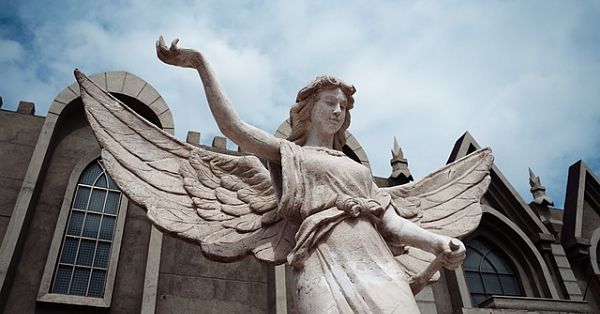
What is the upshot of all of this then? I think that both Wright and Hart are touching on important theological and eschatological factors in their competing analyses. In line with Wright, I think that the NT data, both in the Gospels and in Paul, indicates that there is some element of the resurrection of flesh. Christ’s pre-resurrection body is not abandoned in the tomb. Rather, it is subsumed within his new embodied existence, to the point where he still eats and his wounds are still tangible. And yet, in line with Hart’s critique, it is not simply a pure revivification of the pre-resurrection flesh. Jesus can appear and disappear through locked doors and walls, and has ascended bodily to the heavenly realm where mere flesh and blood cannot go.
The question is then, how are we to reconcile these two models? My best guess, if I was really pressed, would be that the very atoms that make up Christ’s flesh were themselves transformed into the spiritual, incorruptible, more real substance that Hart speaks of. This would allow for the maintenance of Christ’s first-century, Jewish embodied self, while at the same time allowing for the traits we see above, particularly his ascension. However, such a theory is merely a semi-educated guess at best. The eyewitness accounts from the Gospels and the theological formulations of Paul do not tell us the mechanics of how such a resurrection body operates. And all the better that they do not, because subatomic mechanics are not the point. Rather, the point is that the Creator God of Israel has initiated a new act of creation in the resurrection, one that is in both radical continuity and radical discontinuity with our current embodied existence.
Is the resurrection of the body spiritual? In the terms that Hart elucidates—and contra the typical Cartesian understanding of the spiritual as utterly opposed to the physical—of course. Is the resurrection of the body physical, building upon, subsuming, and redemptively transforming our present embodied existence? Most certainly it is. The resurrection of Jesus was and is concretely physical. And yet it is also spiritual, radically transforming Christ’s embodied, physical existence to that of an imperishable, incorruptible, and glorious state that moves more freely through spacial locations than we currently do. Is Wright correct, or is Hart correct?. The answer, of course, lies in the complex middle of the two.
The resurrection of the body is fundamentally physical; no body remained in the tomb. And yet the resurrection is also spiritual, not bound by the corruptible constraints currently upon us. In the end, the exact mechanics of this transformation will forever elude us, precisely because it is does not originate within the contingent, created sphere of existence. And this is because it is New Creation, bursting forth at the end of all things, and the beginning of all things made new, engulfing our embodied selves in the same life that raised Christ from the dead. Such a mystery transcends mere human understanding, and so I end my discussion on the subject the same way—and with the same words—as St. Paul:
But when this perishable thing will have put on the imperishable, and this mortal thing will have put on immortality, then the word which has been written will take place: “Death is swallowed up in victory.
“O Death, where is your victory? O Death, where is your sting?”
Sin is the sting of death, and the power of Sin is the law; but thanks be to God, who gives us the victory through our Lord Jesus Christ. (1 Cor 15:54-57, my translation)
Soli Deo Honor et Gloria




